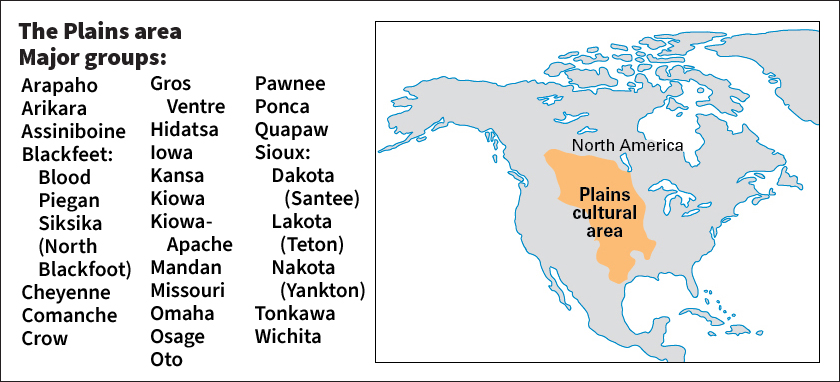Arikara << uh RIHK uh ruh >> are a Native American people that once lived in villages along the Missouri River. They were farmers and buffalo hunters. Today, thousands of descendants of the Arikara, the Mandan, and the Hidatsa live on the Fort Berthold Reservation in North Dakota. The three tribes have intermarried so much that they now call themselves the Three Affiliated Tribes.

The name Arikara comes from an Indian word meaning horns. The term refers to the Arikara’s custom of wrapping their hair around two pieces of bone so that the hair stood up like horns. The tribe’s name in sign language was corn eaters. The Arikara grew a particularly nutritious kind of corn, which they traded to neighboring tribes for buffalo robes and furs.
Corn played an important role in the Arikara religion. The tribe held ceremonies throughout the growing season to ensure a plentiful harvest. They preserved some of the finest ears of corn for many years and honored them as sacred objects. The Arikara lived in earth-covered lodges, each of which housed several families.
In the mid-1700’s, French explorers became the first Europeans to encounter the Arikara. The Arikara were numerous and powerful. They fought frequently with French and American traders and settlers who traveled up the Missouri River on their way west. During the late 1700’s, many Arikara died in battles with the Sioux , who finally drove them from their home. In 1837, smallpox killed many more members of the tribe.
In 1862, the remaining Arikara settled with the Mandan and the Hidatsa near Fort Berthold in what is now North Dakota. The United States government established the area as a reservation for the three tribes in 1870.
